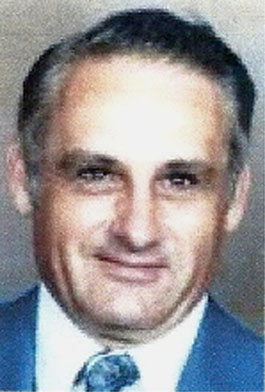In Memoriam: Donald Glenn Jacobs
1931-2012
by Fred Haywood and Bill Goldsmith

On 4 May 2012, Don Jacobs died of natural causes. Hence we say goodbye to a dear friend and one of the early pioneers of the health physics profession. He was known internationally for his work in radioactive waste management, his research and publications about the behavior of radionuclides in the environment, and his work with scientists in developing nations while he served in the early 1970s as a section chief for the International Atomic Energy Agency (IAEA) in Vienna, Austria. He had hundreds of stories to tell about his experiences while handling special projects for the IAEA. Extensive travel was required and he took advantage of every opportunity to hop on a ski lift and head for the beautiful slopes. He really enjoyed skiing in the Austrian Alps. Don also served as the environmental editor of the Nuclear Safety Journal.
During the mid-1950s, Don was recruited to work at the Oak Ridge National Laboratory (ORNL). It was here that, through his research, he began solving many of the problems with the management and disposal of radioactive waste, as well as to understand the science related to the fate of chemicals that were released to the environment. He and his coworkers, especially Dr. Tammy Tamura, were widely recognized for their groundbreaking work in understanding the science associated with environmental health physics. It was during these years that he spent time mentoring those working with him. We remember one occasion in 1980 when, at the request of our Department of Energy (DOE) program manager, Woodrow (Woody) Cottrell, a fellow ORNL health physicist, was investigating a small area where elevated concentrations of 137Cs had been reported in soil samples. The location was in the vicinity of a public school in Niagara Falls, New York. Upon close inspection of the site, it was pretty clear to Woody that most of the rainwater that fell on grounds and buildings of the site drained to the particular location of elevated cesium. He then checked the total integrated fission product fallout deposit at the nearest fallout sampling site and modeled the fate of radioactivity through the drainage pathway to the site of elevated cesium. His calculated concentration of 137Cs was within about 25 percent of the value reported by the state. When he was told that his estimate was incorrect because his calculations also showed that 90Sr should have been present in the typical ratio between the two radionuclides but no 90Sr was observed in the samples, Woody smiled and told of his work with Don and how Don had described the difference between the movement of 137Cs and 90Sr in the environment, saying the strontium moved with the water. Don was a true mentor to all of those with whom he worked. He was almost always able to help fellow workers, students, and employees understand the challenges of tasks by patiently describing approaches and solutions based on his vast experience.
One of the many well-known publications by Don was a document titled "Sources of Tritium and Its Behavior upon Release to the Environment." This report was published by Don in 1968 and was the first in the Atomic Energy Commission (AEC) Critical Review Series, a then new series of state-of-the-art studies prepared for the AEC. It was also prepared for the Nuclear Safety Information Center, one of the AEC's specialized information analysis centers. One of Don's objectives for this work was to summarize some of the important properties of tritium and ways in which it was generated and to use that information in predicting the impact of diverse releases of tritium on local and worldwide populations. He pointed out the important knowledge gaps, especially in the several sources of tritium generation in reactor fuels, and recommended the need for additional research.
When Don left ORNL, he traveled widely, worked for a few private firms, and consulted with several organizations including the DOE, the Southern Governors' Task Force on Nuclear Power, the IAEA, and as technical vice president of National Council on Radiation Protection and Measurements Science Committee No. 87.
Those of us who worked with him for several years remember his wit and good nature. Larry Boing, Argonne National Laboratory, remembers the four years he worked for Don at Evaluation Research Corporation. Larry, one of Don's first employees at Evaluation Research, said Don left us with many pleasant memories of those days—his recollections of his life on the farm, his characteristic laugh, his work experiences at ORNL, along with his colleagues there, his experiences while working at the IAEA, his love of college basketball, and his love of his native home state of Illinois. Larry Boing said he and Don worked together on Nuclear Regulatory Commission and Environmental Protection Agency projects and performed work with colleagues at ORNL—always a fun time and many opportunities to reflect back on all the many pleasant times over the years. Larry also commented on Don having a "jogging addiction"—he was always off and running to complete his daily run. He enjoyed Don's willingness to share his past experience and his broad base of experience in his work. "We did many exciting and fun projects across a wide spectrum of topics." When reading Don's obituary in the Oak Ridger, he had to chuckle that it contained many of his traditional tales of his adventures and his pride and joy in his professional years of work. All of us who worked with and learned from Don will enjoy those memories always.




